In the case of obstructive sleep apnea (OSA), it is most often the tissues located at the level of the soft palate and the tongue that will prevent the passage of air.
This condition is one of the most frequent causes of snoring and sleep apnea.
With airway obstruction, both of these phenomena can occur. The bringing together of the flesh at the level of the throat causes a vibration whose characteristic sound results in snoring, and, by dint of closing, an apnea occurs during sleep.
These episodes of apnea are repeated many times during the night, with durations that can exceed ten seconds. The consequences are twofold. On the one hand during the day, great fatigue occurs, preventing normal pursuit of daily activities, and on the other hand episodes of drowsiness may appear. This drowsiness is the source of significant risks in the event of appearance while driving a vehicle. Added to these problems is the frequent presence of headaches.
Pathological risks are also to be taken into account. The lack of oxygenation induced by these apneas has negative effects on the heart and brain, and the risk of cardiovascular disease or stroke is increased.

However, sleep apneas that are manageable with positional therapy are rarely the most severe forms of apnea.
Lying on your back, an aggravating factor
When understanding the mechanism of airway obstruction, one thing jumps out. The position during sleep directly affects the onset of sleep apnea.
Indeed, by being on your back, all the tissues of the soft palate, the uvula and the tongue are attracted, by the gravitational force, towards the down. If the sagging of the flesh, by its lack of tone or its thickness, can explain the emergence of snoring and sleep apnea.
This is positional obstructive sleep apnea syndrome when there is a 50% increase in risk, and when the cessation of breathing takes place systematically in the dorsal position, it is called exclusive positional sleep apnea syndrome.

The question that can be asked is whether a change in position can improve the patient's condition.
The answer is yes. But this improvement also depends on certain factors.
Positional therapy for sleep apnea
The treatment consists of changing the position during the night. The principle is to prevent the dorsal position which is the source of apnea.
The entire upper part of the bed can be raised so that the airways are clear, but this is not always sufficient.
Sometimes it is necessary to force the person suffering from this pathology to adopt another position. By spending the night in a lying position on your side, you avoid these respiratory problems.
To prevent the dorsal position from being adopted, many techniques are possible, and all aim to make lying on the back uncomfortable. The application of a vibrating device to the neck or thorax, detecting the passage on the back can be effective. It's also easy to position tennis balls on the back of a t-shirt to prevent rollover. Special clothes are also available for purchase to perform the same mission. It is also quite possible to sleep with a small backpack that you will have previously filled with small cushions.
Last method to correct the position, behavioral therapy aimed at allowing a side sleeping position, without the use of artifice.
These techniques are effective but quickly show their limits. Sleeping harnessed in a bag, performing therapy without being sure of the result, no longer being free to move during sleep are all reasons to seek another solution.
Back2Sleep allows, by creating a channel for the air, from the nostrils to the back of the throat during the night, allows free the airways while maintaining your favorite sleeping position.

- Choosing a selection results in a full page refresh.
- Opens in a new window.







